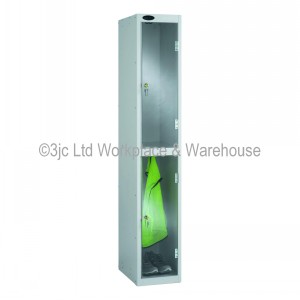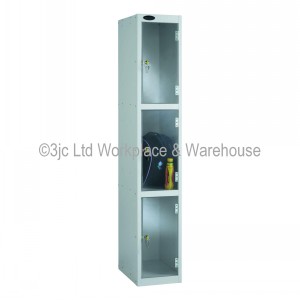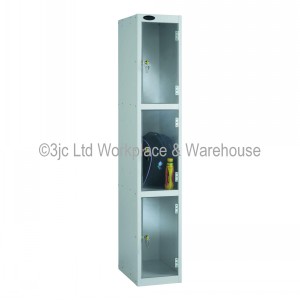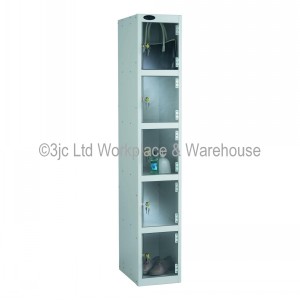In a world where security is a priority, anti-theft lockers have become essential for safeguarding valuables. These lockers provide a robust line of defence against theft, offering peace of mind to individuals and businesses. This comprehensive guide delves into the world of anti-theft lockers, discussing their importance, features, types, and tips for choosing the right one.
Understanding Anti-Theft Lockers
The Importance of Anti-Theft Lockers
Anti-theft lockers offer an additional layer of security, deterring potential thieves and ensuring the safety of your personal belongings. They prevent unwanted access, thus reducing the risk of theft and damage. These lockers also provide security and peace of mind, knowing your valuables are safe.
Features of Anti-Theft Lockers
- High-quality materials: Anti-theft lockers are generally made from robust materials like steel, providing excellent durability and resistance to damage.
- Locking mechanisms: These lockers use different types of locks, including key-based, combination-based, or electronic locks, to keep your valuables secure.
- Versatility: Anti-theft lockers are available in various sizes and designs, making them adaptable to different storage needs.
- Easy installation: Most anti-theft lockers are easy to install, either by yourself or with the help of a professional.
Types of Anti-Theft Lockers
Key-Based Lockers
These lockers use a traditional key and lock system and are a simple yet effective means of securing valuables. They are ideal for environments where access is limited to a few individuals.
Combination Lockers
Electronic Lockers
Cabinet Lockers
Storage Lockers
Choosing the Right Anti-Theft Locker
- Purpose: Determine what you need the locker for. This will help you decide on the locker’s size, type, and features.
- Location: The location where you plan to install the locker will also influence your choice. For example, installing it in a public place might need a locker with a more advanced locking mechanism.
- Budget: Your financial plan will also influence your choice. Evaluate costs from various producers to identify a locker that aligns with your budget yet does not sacrifice quality.
- Security level: Consider the level of security you need. You might need a locker with advanced security features to store precious items.
- Durability: Finally, examine the sturdiness of the locker. Choose one constructed from top-tier materials to guarantee its resistance to wear and tear.
Vision Anti Theft Locker
Different Variations of the Vision Anti-Theft Locker:
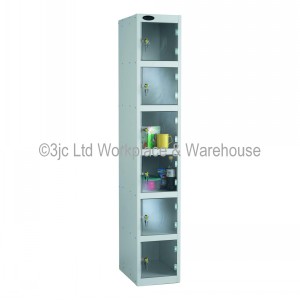
Conclusion
Frequently Asked Questions
Here are a few commonly asked queries about the anti-theft lockers.
How can locker rooms prevent theft?
There are several measures that locker rooms can take to prevent theft:
1. Lockers: Ensure all lockers are secured with durable, high-quality locks. Encourage users to lock all their belongings securely and not to share their combinations or keys with others.
2. Surveillance Cameras: Install security cameras at the entrance and throughout the locker room area. While cameras in the actual changing area may invade privacy, they can be placed in areas where lockers are present and in entrance pathways.
3. Staff Supervision: Regular patrols or supervision by staff members can deter potential thieves. Staff can also assist in reinforcing locker room rules.
6. Good Lighting: Well-lit spaces can dissuade potential theft.
7. Access Control: Utilise membership cards or key codes to restrict access to only authorised individuals.
8. Guest Registration: For locker rooms within clubs or spas, keep a register of all guests and require an ID for entry.
9. Regular Clearouts: Clean out lockers to prevent build-up of left-behind items.
10. Lost and Found: Establish a clear protocol for lost and found items.
Where should lockers be kept?
Lockers should be placed in a location that is safe, secure, and accessible to their intended users. Here are some considerations for where to keep lockers:
1. Visibility: For security reasons, lockers should be within sight of supervisory staff or surveillance cameras.
3. Space: Lockers should be placed in an area with sufficient space for people to open them and remove their belongings without causing obstruction.
4. Lighting: The area should be well-lit for safety and accessibility.
5. Ventilation: Proper ventilation is essential, especially for gym lockers, to prevent the build-up of odours or mould.
6. Supervision: Lockers placed in areas with regular foot traffic or supervision can help reduce the risk of theft.
What are the different types of lockers?
Numerous locker types exist, which are categorised based on diverse elements, including material, size, purpose, and locking system:
1. Material:
– Metal Lockers: These are traditional, durable and commonly found in schools and workplaces.
– Plastic Lockers: These are rust-resistant and often used in wet and outdoor environments, like swimming pools.
– Wooden Lockers: Often found in high-end settings like country clubs, these have a more luxurious, warm aesthetic.
– Laminate Lockers: These are durable, and their surface can be easily customised with different colours or patterns.
2. Size:
– Full-Size Lockers: These are tall and generally designed to hold coats, backpacks and more oversized items.
– Half or Cube Lockers: Smaller lockers are usually placed on top of full-size lockers for smaller personal items.
– Two-tier and Multi-tier Lockers: These have several compartments stacked vertically to accommodate more lockers in limited space.
3. Usage:
– School Lockers: Used by students to store books, school supplies, and personal items.
– Gym Lockers are used in fitness centres and sports facilities to store workout gear and personal items.
– Work Lockers: Used in workplaces for employees to keep their personal belongings secure.
4. Locking Mechanism:
– Key Lockers: Traditional lockers require a physical key to lock and unlock.
– Combination Lockers: Uses a sequence of numbers or symbols to lock and unlock.
– Digital or Electronic Lockers: Uses a digital code or electronic key card. These lockers can often be programmed for different users at different times.
– Coin-operated Lockers: Often used in public spaces like malls or train stations where users can deposit a coin to secure the locker and retrieve their coin when they unlock it.
What lock do you need for a school locker?
The type of lock needed for a school locker typically depends on the school’s policy or design. The most common styles include:
1. Combination Locks: These are the traditional style of lock used on many school lockers. They use a sequence of numbers that must be entered in a specific order to open the lock. These do not require a physical key, so there’s less risk of loss, although the combination must be remembered.
2. Key Locks: Some lockers may require a physical key lock. These are rare in schools due to the risk of students losing the key.
3. Built-in Locks: Some lockers come with built-in locking mechanisms. This can be a combination lock or a key lock integrated into the locker door.
4. Electronic Locks or Digital Locks: These are modern types of locks but are not commonly used in schools. They use a digital code or an electronic system such as a key card to unlock the locker.
Before buying a lock, it’s essential to check the school’s lock policy and design. Some schools may require specific types of locks or brands for uniformity and security reasons. Additionally, the safety needs to fit the locker – not all locks fit all locker designs.
What are the benefits of metal lockers?
Metal lockers have various benefits, which make them a common choice for many environments like schools, workplaces, and gyms.
2. Security: The sturdiness of metal lockers offers superior security for personal belongings.
3. Easy Maintenance: Metal lockers can be easily cleaned and maintained. They are not prone to issues like mould or mildew, which can affect wooden lockers.
6. Versatile: They can be painted or powder coated with different colours for a more attractive appearance or to match the organisation’s branding.
8. Recyclable: Once a metal locker reaches the end of its useful life, it can be recycled.
One should also note that metal lockers may not be suitable for humid environments as they may rust and dent if roughly handled. Proper maintenance and care are essential for longevity.
How do I organise my locker storage?
1. Shelving: Use shelves to divide the space into different levels so books, bags, or clothes aren’t piled on each other.
2. Bins and Boxes: Use small bins or boxes for miscellaneous items to help keep your locker neat.
3. Magnetic Containers: Magnets stick well to most lockers. Utilise magnetic pencil holders, small storage containers, or magnetic hooks for hanging coats or bags.
4. Locker Organiser: Buy a pre-made locker organiser. They often include shelves, hooks, and sometimes even a mirror or whiteboard fitted perfectly to a locker’s size.
5. Label Everything: Label shelves or containers to help remind you where things go, speeding up clean-up and making it easier to find your items.
7. Regular Clean-up: Clean your locker to remove unnecessary items – old papers, food wrappers, etc.
8. Vertical Space: Utilise the locker’s door and high areas. Adding storage to the door can maximise space.
9. Color Code: If you share a locker, colour-code your items to know what belongs to whom quickly.
10. Hooks: Use hooks to hang items like headphones, keys or your gym towel, making them easy to grab.

